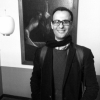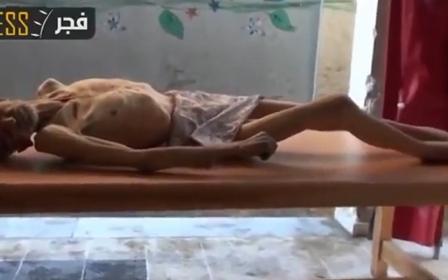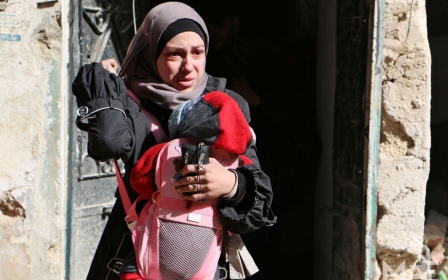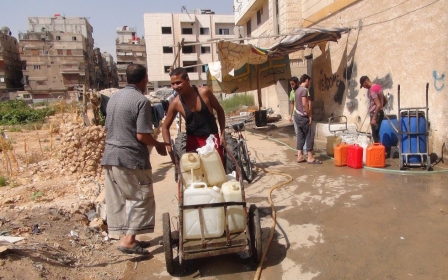Yarmouk: The rise and fall of Palestinian dreams
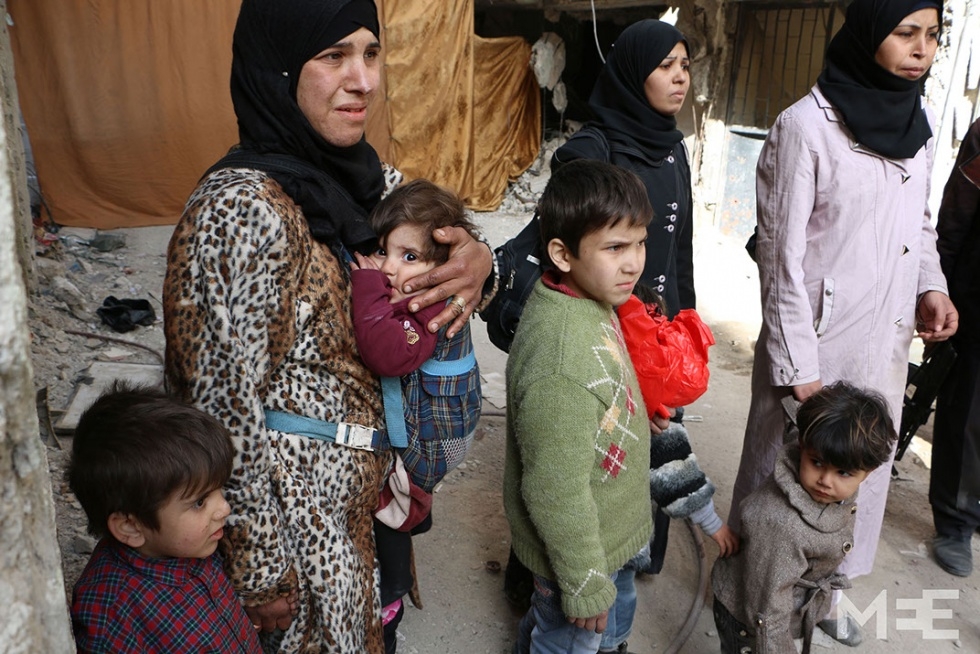
In his Homage to Catalonia (1938) and Looking Back at the Spanish Civil War (1943), George Orwell never stops reminding us of the disgusting and jittery reality of living in war-torn zones. Real physical hunger for food and also conceptual, illusory hunger for hope and victory, Orwell argued, constantly knit themselves into the nervous, daily fabric of civil war. “Here we are, soldiers of a revolutionary army, defending democracy against fascism,” Orwell recalls. But “animal hunger of trench life, the squalid intrigues over scraps of food,” Orwell sniffs, cast their gripping shadows on people’s daily survival. The shadow of death because of hunger leaves around 20,000 Palestinians in Yarmouk glued to extreme pain and wrath. But Palestinians of Yarmouk know full well that “hunger” in the camp is just one ugly truth disguising a long history of loss.
Recovery
On the eve of the Nakba (1948), my grandfather was forced out of Palestine by armed Zionist groups. He lived in Haifa before the Zionists engineered a mass exodus for thousands of Palestinian civilians. He escaped to Beirut. He did not like being lonely in Beirut. Most of his relatives had already gone to Damascus. He decided to join them in Yarmouk.
In Yarmouk, he was poor. He left everything he owned in Palestine. He hoped he would return soon. Yarmouk became a shelter for the wandering, dispossessed Palestinians who were now searching for a new beginning.
My grandfather did not like Yarmouk. He saw it as a primitive thing. Once he mentioned how in Palestine people would often go camping to enjoy themselves. For the first time in his life, after arriving in Yarmouk, he realised that people also go to camps to seek shelter. He recalled the first time he arrived in Yarmouk that he was so hungry, he immediately asked for the blue UN card allowing free access to food.
In Yarmouk, Palestinians developed a new form of hunger. Education, as they believed, was their weapon against those who robbed them of their land. Yarmouk during the sixties and seventies sent hundreds of students to universities in Damascus, Beirut, Baghdad and Amman. Soon, Yarmouk became the most literate suburb in Damascus. Palestinians in Syria became the most educated community in the country. However, many Palestinians in Yarmouk knew that choosing education as a tool for recovery may be likened to the plight of a haggard, limping and half-dying soldier claiming that he is now so ready to repair the material and psychological damage the war caused him. Still, Palestinians in Yarmouk decided to carry on.
Resistance
In the seventies and eighties, people in Yarmouk were so ready for radical, left-wing ideas of revolution and resistance. The Palestinian left inside the camp gathered many supporters. Marxist and communist ideas of revolution and justice were very popular. Many young people from Yarmouk joined the Palestinian armed resistance in Jordan and Lebanon. They fought against Israel and its right-wing proxies in Lebanon. Yasser Arafat and his Fatah movement were popular in the camp. However, the loyalists to Arafat in the camp operated undercover. Hafez al-Assad, the Syrian president at the time, did not like Arafat.
The hunger for the return to Palestine via a route of armed resistance and secular utopia received a death blow in 1991. The Oslo Agreement between the PLO and Israel did not offer a solution to the plight of refugees. Yarmouk’s hunger for the liberation of Palestine by means of armed resistance was, therefore, bound to end. People realised that folkloric songs at a wedding can capture their dreams of returning to Palestine, but they also knew that the right of return was becoming something beyond their grasp.
Mind the Gap
In 2000, my uncle, an ardent leftist, gave me and my brother the complete works of Lenin and Marx. We asked him why he is getting rid of these dusty books. “Yarmouk is no longer hungry for secular ideas of revolutions and resistance,” he replied. It was obvious for many observers from the Left that Yarmouk was now bracing for a religious utopia.
In 1991, Yasser Arafat decided to back Iraq against Kuwait. After the liberation of Kuwait from Saddam Hussein’s army, many Palestinians felt they were no longer welcome in the Gulf. Many Palestinian workers in Kuwait and other Gulf countries returned to Yarmouk. The wealthy among them decided to invest the money they brought back. They bought properties and built houses for rent. Rent and property prices went up in Yarmouk. Others invested in commerce. Visitors to Yarmouk in the last 10 years before the Syrian war started would have noticed how Yarmouk was increasingly becoming a commercial hub. This new wave of money making and trade in the camp definitely widened the gap between the rich and the poor. The rich were becoming richer. The poor were becoming poorer.
The 2003 invasion of Iraq added salt to the already festering injury. Thousands of Iraqi refugees arrived in Yarmouk. Housings and services in the camp could not cope with the influx of new refugees. The sense of desperation and lack of opportunities opened the door for religiosity. I recall that many young people during this period were becoming excessively religious. But the US-led invasion of Iraq pushed some young people towards what analysts these days call “militant Islamism”. Religion was increasingly pushed into the playfield of politics. Several young Palestinians from the camp went to perform jihad against the Americans in Iraq. Embracing religious utopias offered a cure for long-held political wounds.
Back to Hunger
In 2011, Palestinians decided not to take sides in the Syrian revolution. They recalled how their fellow Palestinians in Lebanon were massacred and also endured brutal sieges. But the Syrian war was at their doorstep.
Many Syrians from the suburbs surrounding Yarmouk hurried into the camp to seek refuge from heavy shelling on their areas. The camp was soon dragged into the Syrian war. The regime bombed it from above. The Syrian opposition decided to take over the camp. The regime, in coordination with loyal Palestinian factions, is now besieging the camp. Around 20,000 Palestinians remain trapped in the camp. They are now searching for what my grandfather once asked when he first arrived in the camp: enough food to carry on living and dreaming about returning to Palestine.
- Dr Mohammad Sakhnini is a writer and journalist based in London. He lived in Damascus before moving to the UK to do his MA and PhD in English literature at the University of Exeter. His articles have appeared in several academic journals and media outlets.
The views expressed in this article belong to the author and do not necessarily reflect the editorial policy of Middle East Eye.
Photo: Around 20,000 Palestinians remain trapped in Yarmouk (AFP)
New MEE newsletter: Jerusalem Dispatch
Sign up to get the latest insights and analysis on Israel-Palestine, alongside Turkey Unpacked and other MEE newsletters
Middle East Eye delivers independent and unrivalled coverage and analysis of the Middle East, North Africa and beyond. To learn more about republishing this content and the associated fees, please fill out this form. More about MEE can be found here.


